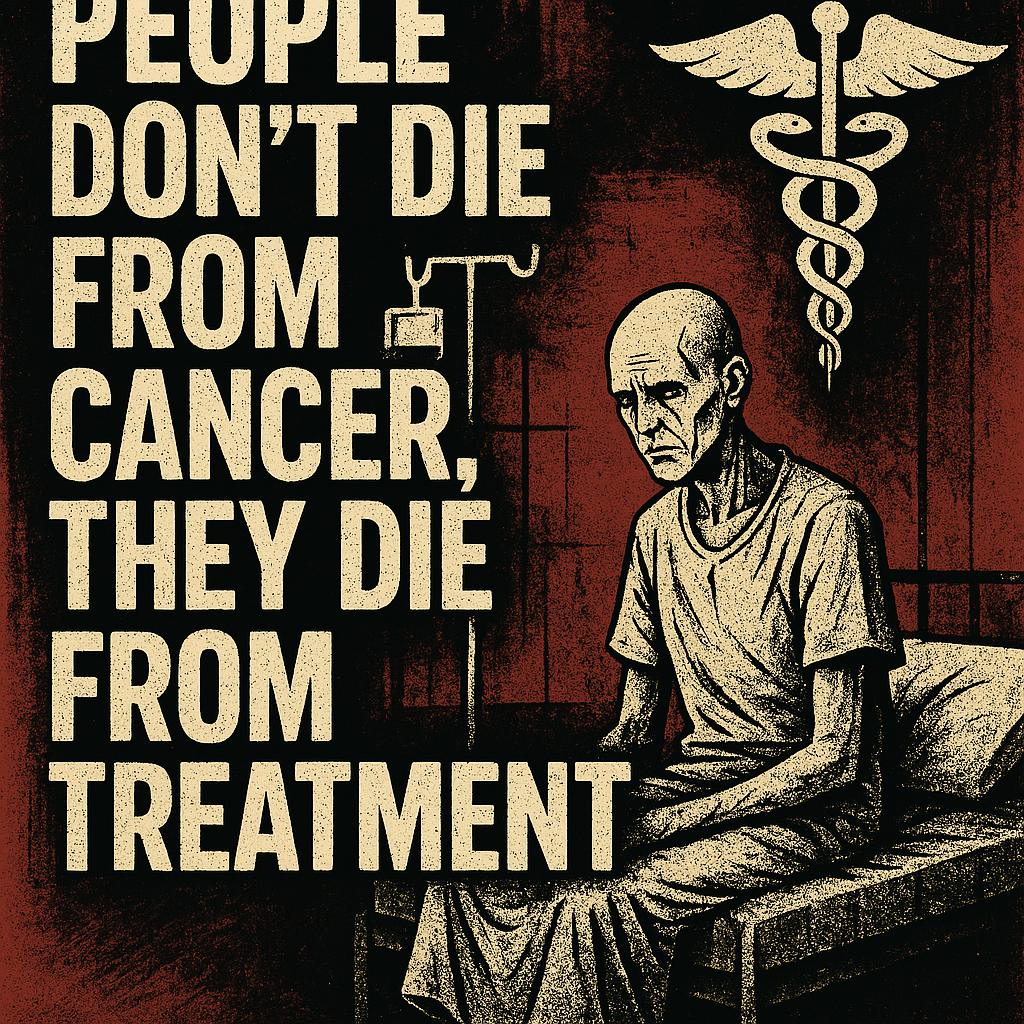
Cancer treatment, the origins of chemotherapy, and those in the pharmaceutical industry have reaped enormous profits. When we talk about chemotherapy, we often forget its dark origins—one of the most toxic substances ever created: Mustard gas, used as a chemical weapon in World War I. Mustard gas became a cancer treatment. If I told you that this widely used therapy is based on one of the most harmful substances ever devised by cruel humans.
In the early 20th century, mustard gas—a chemical weapon infamous for its devastating effects during World War I—was banned by the Geneva Protocol in 1925 due to its brutal, inhumane nature. It caused horrific burns, severe respiratory damage, and death to soldiers on the battlefield. The chemical was classified as a war crime because of the extreme suffering it inflicted.
However, in a shocking and tragic twist of fate, this same deadly substance would later find its way into the world of medicine as an alleged cure for cancer.
Mustard gas, which caused terrible burns and death, was studied in the 1940s during World War II. Researchers began exploring its biological effects—its ability to destroy bone marrow and damage lymphoid tissue. They quickly realized that these destructive properties could be harnessed to target the rapidly dividing cells characteristic of cancer.
A shocking decision was made: researchers and pharmaceutical companies—including Merck, Bristol Myers Squibb, Pfizer, Eli Lilly and Company, Bayer, and Johnson & Johnson—decided to take these toxic derivatives and turn them into cancer treatments.
Instead of directly curing cancer, mustard gas derivatives, such as Mechlorethamine (HN2), became the foundation of chemotherapy. This marked the birth of Mechlorethamine (HN2), the first nitrogen mustard compound used to treat cancer. Developed by Merck and the U.S. military, Mechlorethamine was directly derived from mustard gas—a substance banned for its inhumanity after World War I. Despite knowing the severe toxicity of this chemical, these pharmaceutical companies pushed forward, deciding that the potential to target rapidly dividing cancer cells justified the risk of poisoning patients.
This approach, based on nitrogen mustard, was seen as a potential treatment for cancers like leukemia. It was a novel idea—using a toxic chemical designed to kill as a means to destroy other deadly cells—but the solution came with truly devastating consequences. Chemotherapy became the new treatment, but what many fail to realize is that it wasn’t designed to cure. It was a method to control cancer with poison. It destroyed both healthy and cancerous cells, leading to weakened immune systems, organ failure, and, for many, death—not from cancer, but from the treatment itself.
Chemotherapy acts indiscriminately, attacking rapidly dividing cells in the body. This means that while it may destroy cancer cells, it also devastates healthy tissues—it doesn’t distinguish between malignant and healthy cells. The decision to use mustard gas derivatives to treat cancer wasn’t driven by medical breakthroughs or compassion for patients, but by the willingness of some researchers and pharmaceutical companies to capitalize on a toxic agent that could be “repurposed” for profit.
Instead of exploring safer, more targeted solutions, these chemical agents were refined, marketed, and administered to cancer patients as treatment, even as the devastating side effects became painfully clear.
The body’s natural systems were poisoned, leading to liver failure, kidney damage, heart failure, and even death. Despite these dangers, chemotherapy became a cornerstone of cancer treatment, regardless of the destruction it caused. The truth is, chemotherapy doesn’t just treat cancer—it often does more harm than good. Patients aren’t dying from cancer; they’re dying from the treatment.
Toxicity has become normalized as patients endure massive damage to their bodies, from weakened immune systems to severe organ failure. Many cancer patients don’t live long enough to experience relief or a cure. Instead, they’re trapped in a cycle of pain, suffering, and death.
A cycle fueled by the very substance meant to save them. In a world where we’ve witnessed tremendous advancements in technology and scientific breakthroughs, cancer, at its core, is fundamentally uncontrolled cell growth. The hope was that by introducing such a powerful agent into the body, it could kill cancer cells—but the reality is far more sinister.
We must ask: Why does this continue? The answer is obvious: profit. These pharmaceutical companies recognized an opportunity for financial gain and refined these toxic treatments to make them more palatable, but they never truly addressed the underlying issue—the deadly poison. Why do we still accept this? We don’t need to rely on poison to treat cancer anymore. There are alternatives—aren’t there better solutions?



